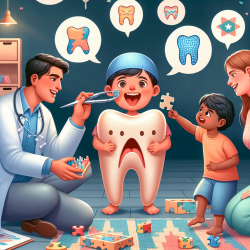Introduction to the UPPS-P Model of Impulsive Personality
In the field of speech-language pathology and psychology, understanding personality traits is crucial for effective diagnosis and treatment. The UPPS-P Model of Impulsive Personality, derived from the Five Factor Model of Personality, offers a multi-dimensional approach to understanding impulsivity. This model includes five distinct traits: negative urgency, lack of premeditation, lack of perseverance, sensation seeking, and positive urgency. Each trait is associated with different risk behaviors and psychopathologies, making it essential for practitioners to consider these dimensions when diagnosing and treating disorders.
Application of the UPPS-P Model in Diagnosis
Despite the frequent use of impulsivity as a criterion in clinical disorders, the UPPS-P traits are not well-represented in the DSM-5. This oversight limits the understanding of etiology and treatment targets. By applying the UPPS-P model, practitioners can improve diagnostic accuracy and tailor interventions to specific traits, enhancing treatment outcomes.
Enhancing Treatment through the UPPS-P Model
The UPPS-P model's application extends beyond diagnosis to treatment processes. Research indicates that impulsive personality traits significantly impact treatment outcomes. For instance, negative urgency and lack of premeditation are linked to poorer outcomes in substance use treatment. Addressing these traits directly can lead to more effective interventions and reduce the risk of relapse.
Implications for Practitioners
For speech-language pathologists and psychologists, integrating the UPPS-P model into practice can provide a comprehensive understanding of impulsivity. This approach not only aids in distinguishing between disorders but also offers insights into individual personality profiles within disorders. By focusing on data-driven strategies, practitioners can enhance their ability to create positive outcomes for children and other clients.
Encouraging Further Research
While the UPPS-P model has shown promise in improving diagnosis and treatment, further research is needed to explore its full potential. Practitioners are encouraged to engage with the existing literature and consider how these findings can be applied in their practice. Continued exploration of the UPPS-P traits can lead to more refined and effective therapeutic approaches.
To read the original research paper, please follow this link: Recommendations for applying a multi-dimensional model of impulsive personality to diagnosis and treatment.










